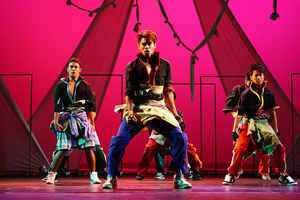ON DAYS LIKE THESE, MY EMOTIONS ARE MORE THAN WHAT’S HEARSAY
NOT GREAT, NOT GOOD, NOR BAD, BUT SOMEWHERE AROUND OKAY
PARANOIA SEEMS TO ADD TO THIS RELEVANT FRAME OF MIND
REAPING COMMON STRESS AND WORRY AND ANXIETY OF EVERY KIND
BUT INSOFAR I’M PAST THE FOIBLES OF MENTAL DISFUNCTION
IMPERVIOUS TO DEPRESSION AND ALL THAT IN CONJUNCTION
AS LOVE FOR ME DOES NOT EXIST ON ANY SUPERFICIAL LEVEL
NO MORE DANCING WITH THE CONCEPT ON FEET THAT ARE BEVELLED
AS TO REACH THE GREATER HEAVENS, TO TOUCH THE HANDS OF GOD
HAVE SOLELY BECOME THE FEAT OF BIGGER FEET THAT PLOD
THAT STAND FIRM ON THEIR GROUND, THAT STAY PUT WHEN THEY’RE TOLD
ON VAST LAND FULL OF RICHNESS THAT NEVER CAN BE SOLD
BUT WITH ALL DUE RESPECT, TO GIVEN HISTORY AND PAST
FOR ALL THAT I REMEMBER OF THINGS I THOUGHT WOULD LAST
SOMETIMES I MISS WHAT I HAD, THINK BACK ON WHERE I’VE ROAMED
REGRET I HAD TO MOVE ON, FROM THE PLACE I ONCE CALLED HOME…
I wrote this poem almost four years ago when I was at a crossroads in my life: in my love type relationships, living situation, family life and my career. And without going into too much detail about it, I lost faith in love, life and just living in general. So I knew that something had to change, or else, I’d hit rock bottom.
After almost two years of soul-searching, I discovered Ballroom and Latin dance. And it has since become my new home.
Truthfully, though, dance has always been my home and a part of my life for 15 years now. I always say that, without it, I’d be some crazy, obese person–and I mean this with the utmost sincerity. But Ballroom and Latin dance has done something for me that I never dreamed possible. It has made me a confident and self-assured person. Mostly, it has allowed me to look at myself in the mirror and, on most days (I’m still working on it), say that I like who I am.
I cannot pinpoint exactly how it’s done this, but I know that a lot of it has to deal with the social aspects of Ballroom and Latin dance. The idea of courting someone and being chivalrous–or simply asking someone “Would you like to dance?” Also, having the ability to be in someone’s personal space and not feel intimidated, uncomfortable or awkward is something that this dance style has taught me. Or lastly, just being able to present myself with poise and good posture is something I lacked and never cared to learn early on in my life.
All in all, I am posting this blog, not because I want to promote Ballroom and Latin dance and get more students or clientele. But, I do want to say that as a dying tradition, I can say firsthand that Ballroom and Latin dance is so much more fulfilling and purposeful than most would think. It has given me a new life and a new place that I consider home. It has made me a much stronger and happier person today.
In the last two lines of this poem I say, “Sometimes I miss what I had, think back on where I’ve roamed/Regret I had to move on, from the place I once called home…” This still holds true, and I think a part of me will always miss the things that were, although complacent, comfortable and home-like. But I know that I’m in a good and healthy place right now, and I am hoping to keep it that way. And it is mostly because I have Ballroom and Latin dance in my life.










